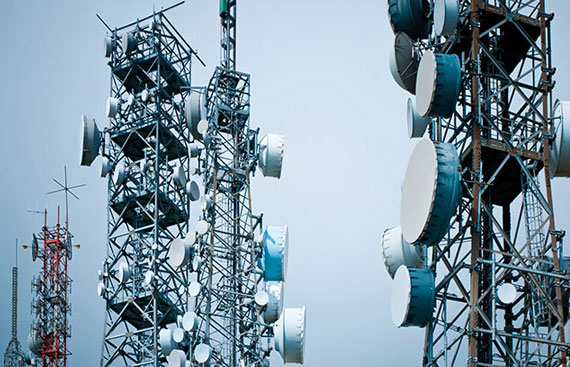Jayanta on the Future of Telecommunications

Telecommunications is among the few industries shaping the future of mankind. The underlying mechanics of this industry is often the most debated and discussed topic in the world. This industry is mostly influenced by human behavior and entrepreneurial practicality, which is why we are seeing a burst of technological evolution in our time.
The application of such technologies, presents many exciting opportunities which will make communication seamless and secure. These growth opportunities are being enabled by the fusion of sensor, network, cloud, security and cognitive technologies making smart, secured, ubiquitous computing a reality among others.
Technology continues to contribute to the development of the telecom industry. Some of the applications that will make noteworthy changes are listed below:
Industrial Internet of Things (IIoT)
We have made significant progress in predictive maintenance, asset tracking, fleet management and smart metering in industrial IoT. Very soon we will witness their advanced applications like autonomous cars, remote surgery among others which will drive benefits to the society. However, IoT applications will need highly reliable, always available and low latency networks (less than few milliseconds of delay) and that’s why 5G holds the promise of making this a reality.
Augmented and Virtual Reality (AR/VR)
AR/VR is all set to transform aftermarket services, when combined with the real-time collaboration features provided by a network. AR/VR will help build immersive applications that help improve productivity and customer experience. For instance, with AR/VR, one can provide on the job training or setup real-time collaboration which, for example, could help save precious time during a medical emergency.
Artificial Intelligence (AI) & Robotics
We are at the cusp of industrial revolution 4.0 and AI and Robotics will be one of the key enablers of that growth. Going forward, we will see smart factories where all machines will be interconnected and will assist humans in a co-existential workspace. AI and Robotics will have multiple benefits, from providing surveillance services for smart cities, to building imaging as a service by secured transfer of sensor data to the cloud and run deep learning algorithms in the cloud.
Smart Wearables
Today, smart wearables are assisting app based companies to provide healthcare as a service. Advanced applications of these wearables will help develop cures for rare diseases, telemedicine etc. High performant computing fabric, nanobots and deep learning will be key to understand the anatomy of the human body better and will boost associated industries.
Block Chain
The communication industry is in an ideal position to operate a decentralized private marketplace based on blockchain technology. This will enable getting a fair share of the traditional online marketplace that is currently dominated by a few players.
Vertical Markets
Almost all vertical markets whether it is media, insurance, and healthcare, to name a few, are in various phases of their digital transformation journey. These enterprises are transforming to a D2C (Direct to Consumer) model and offer digital products on the cloud in ‘as a service’ model. This will lead to a differentiated offering of services based on a network integrated cloud platform for businesses.
How to Get There?
The possible applications of the above-mentioned technologies are multiple, once we have developed the supporting elements. For now, we must look at the underlying tactics that has the potential to reinvent the telecommunications industry.
• Adopt the Agile and DevOps way of working to be able to compete with internet players- It requires significant training of the workforce, infusion of new talent and a matured change management process.
• Significantly reduce CAPEX/ OPEX costs- Move to a software defined infrastructure leveraging commodity hardware and open source technologies.
• Leverage technologies with origins outside the telecom industry like OCP (Open Compute Project) and Project Loon- Around 54 percent of the world’s population functions without internet connectivity. The communication industry needs to innovate and provide affordable solutions to all.
• Avoiding the global Spectrum crunch- Finding other innovative approaches like making use of unlicensed spectrum band, spectrum sharing and evaluation of alternate technologies like LiFi that can complement spectrum based cellular technologies.
• A collaborative approach towards new cellular standards like 5G- It must be defined quickly to avoid pre-standard implementation and creating multiple geographic variants.
• Quick turnaround time for launch of innovative services- Simplification and complete automation through zero touch operations. Self-service model should be delivered from the cloud and ‘as a service’.
• Build next generation ‘asset light’ services- Services that can run on any infrastructure like the internet.
• Leverage geographic footprint and transform existing central offices and point of presence to Micro Clouds at the Edge for Analytics, Content Caching and for IOT gateways for sensor data processing- Value creation at the Edge will ensure that the communication industry is not reduced to a commodity bandwidth provider.
• Lastly, ensuring that Security- By-Design is built into the communication infrastructure though an open and close collaboration with technology providers.
The telecommunication industry keeps reviving its model with the influence of advanced technologies. It is clear that telecommunications is set to drive significant developments, the underlying factors require utmost attention of developers and managers.
